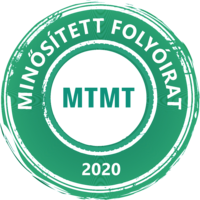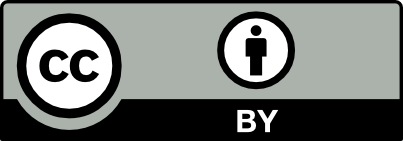Possibilities of optimizing fuel consumption in hybrid and electronic airplanes
DOI:
https://doi.org/10.14232/analecta.2019.2.65-76Keywords:
hybrid and electronic airplanes, fuel consumption, optimization modelAbstract
The automotive industry was always characterized by innovation and the use of cutting edge technology. Daily we can see vehicles packed with technological advancements. The main focus of the current technological trend is electric drives. With the rise in popularity of electric cars more types of vehicles are adapting electric drives. In the case of airplanes the standards are higher than in the case of cars so the emphasis of research and innovation is greater.
This paper presents a list of the challenges electric aircrafts face and their potential solutions. Currently many of these problems currently only have partial solutions if any. There is also a comparison between the properties of materials used and the expectations for hybrid aircraft. A comprehensive model was created taking into account the criteria set for hybrid and electric aircraft. With the aid of the model the effect of the most important components on efficiency can be assessed.
Downloads
References
Advisory Council for Aeronautics Research in Europe. Strategic Research Agenda, Volume I, October 2002.
International Air Transport Association, “IATA Calls for a Zero Emissions Future”, Press Release No.21, 4 June 2007, published in http://www.iata.org, cited: 30 May 2011.
European Commission, “Flightpath 2050: Europe’s Vision for Aviation”, Report of the High Level Group on Aviation Research, Publications Office of the European Union, Luxembourg, 2011
Seitz, Arne, Askin T. Isikveren, and Mirko Hornung. "Pre-concept performance investigation of electrically powered aero-propulsion systems." 49th AIAA/ASME/SAE/ASEE Joint PropulsionConference. 2013. 3608.
Casalino Lorenzo; Zafferetti Mirko. Turbo-Electric propulsion system of a high bypass-ratio turbofan engine for civil liner aircraft. 2018.
Seitz, A., Schmitz, O., Isikveren, A.T., Hornung, M., “Electrically Powered Propulsion: Comparison and Contrast to Gas Turbines”, Paper No. 1358, Deutscher Luft- und Raumfahrtkongress 2012, Berlin, September 2012
Schmitz O., Hornung M. “Unified Application Propulsion System Performance Metrics”, GT2013-95724 in Proceedings of ASME Turbo Expo, San Antonio, Texas, 3-7 June, 2013.
Aigner, B., Nollmann, M., & Stumpf, E. Design of a hybrid electric proupulsion system within a preliminary aircraft design software environment. Deutscher Luft- und Raumfahrtkongress 2018
National Academies of Sciences, Engineering, and Medicine: Commercial Aircraft Propulsion and Energy Systems Research. Reducing Global CarbonEmissions, Washington, D.C: The National Academies Press, ISBN 978-0-309-44096-7, 2016.
Van Bogaert, Joris. "Assessment of Potential Fuel Saving Benefits of Hybrid-Electric Regional Aircraft." (2015).
F. Christian and A. R. Paul, Design of hybrid-electric propulsion systems for light aircraft, in 14th AIAA Aviation Technology, Integration, and Operations Conference, AIAA Aviation (American Institute of Aeronautics and Astronautics, 2014) doi:10.2514/6.2014-3008.
J. Y.Hung and L. F. Gonzalez,On parallel hybrid-electric propulsion systemfor unmanned aerial vehicles, Progress in Aerospace Sciences 51, 1 (2012).
Joris Van Bogaert, Assessment of Potential Fuel Saving Benefits of Hybrid-Electric Regional Aircraft, TUDelft, Delft, 2015.
R. Singh, A. T. Isikveren, S. Kaiser, C. Pornet, and P. C. Vratny, Pre-design strategies and sizing techniques for dual-energy aircraft, Aircraft Engineering and Aerospace Technology 86, 525 (2014).
Rossi, Niccolò. "Conceptual design of hybrid-electric aircraft." (2018).
D.V. Ragone, Review of Battery Systems for Electrically Powered Vehicles, SAE Technical Paper, 1968.
A.T. Isikveren, C. Pornet, Y. Fefermann, C. Maury, Hybrid-Electric Motive Power Systems for Commuter Transport Applications, 30th Congress of the International Council of the Aeronautical Sciences, September 2016.
P. Birke, Electric Battery, Actual and future Battery Technology Trends, Continental Powertrain Division, May 2010.
Fraunhofer Institute for Systems and Innovation research, Technology Roadmap Energy Storage for Electric Mobility 2030, BMBF Innovationsallianz, 2015.
Oxis Energy, https://oxisenergy.com/products/.
Siemens, Electric propulsion components with high power densities for aviation, Transformative Vertical Flight Workshop, March 2015.
T. Shinzato, S. Arakawa, H. Oyama, H. Saka, T. Hayasaki, Development of High-Temperature Superconducting Motor for Automobiles, SEI Technical Review 75, October 2012
Hoogreef, M., Vos, R., de Vries, R., & Veldhuis, L. L. (2019). Conceptual Assessment of Hybrid Electric Aircraft with Distributed Propulsion and Boosted Turbofans. In AIAA Scitech 2019 Forum (p. 1807).
Molnár, T. ; Szuchy, P. ; Csikós, S. ; Gogolák, L. ; Bíró, I. ; Sárosi, J. Material tests and analysis of aircraft materials annals of faculty of engineering hunedoara - international journal of engineering 17 : 1 pp. 95-100. , 6 p. (2019) Journal Article/Article (Journal Article)/Scientific
Csikós S. ; Molnár T. ; Szuchy P. ; Gogolák L. ; Bíró, I. ; Sárosi, J. Vibrational tests and analysis on materials used in aircraft Review of Faculty of Engineering Analecta Technica Szegedinensia 12 : 2 pp. 32-36. , 5 p. (2018)
Downloads
Published
How to Cite
Issue
Section
License
Copyright (C) 2023 Authors
This work is licensed under a Creative Commons Attribution 4.0 International License.













